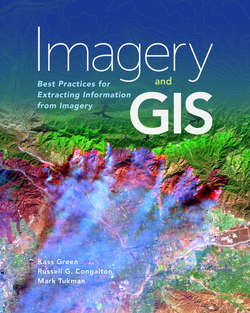Читать книгу Imagery and GIS - Kass Green - Страница 42
На сайте Литреса книга снята с продажи.
Piloted or Unpiloted
ОглавлениеUntil recently, most satellite platforms were unpiloted, and most airborne platforms were piloted. However, with the advent of unmanned aerial vehicles, most airborne platforms are now unpiloted, but piloted aircraft still capture much larger areas than unpiloted platforms. While less used, piloted satellite platforms have been very important in remote sensing. Starting with the Apollo space mission in the late 1960s and continuing with the International Space Station today, piloted satellites have completed many successful remote sensing missions including NASA’s Shuttle Radar Topography Mission, which generated global digital elevation models of the earth from 56 degrees south to 60 degrees north. In 2019, the International Space Station will deploy the GEDI lidar to produce a 3D map of the earth’s forests.
Most of the areas captured by airborne platforms used for mapping today are flown over by a pilot residing in the platform. UASs are either autonomous or have a pilot operating them from the ground. Originally developed and used by the military, the use of UASs in civilian markets is exploding because of their low cost, their ability to collect imagery over inaccessible or dangerous areas, and their ability to fly low and slow, enabling the capture of high-resolution imagery over small areas that would be too expensive to capture with piloted aerial systems. Hobbyist use in the United States has skyrocketed since 2010, but commercial use was stalled because of cumbersome FAA regulations. In 2015, the FAA streamlined the process for gaining authorization to commercially operate UASs in the US, resulting in a 500 percent increase in applications in the first six months of 2015 over all of 2014 (Andelin and Andelin, 2015). Outside the United States, UAS use is also rapidly increasing with successful deployments to map archeological sites, establish property rights, monitor illegal resource extraction, and support disaster response (Pajares, 2015).
While civilian drones do not currently have the capacity to capture imagery over large areas, the use of UASs is likely to continue to rapidly expand and evolve. As stated in the primer Drones and Aerial Observations:
Technology will change. Faster processors will stitch together and georectify images more quickly. The acuity of photographic sensors will improve, as will the endurance and range of drones. Increasing levels of autonomy in both flight software and post-processing software will allow for the creation of cheap maps with increasingly less direct human intervention (Kakaes et al., 2015).
